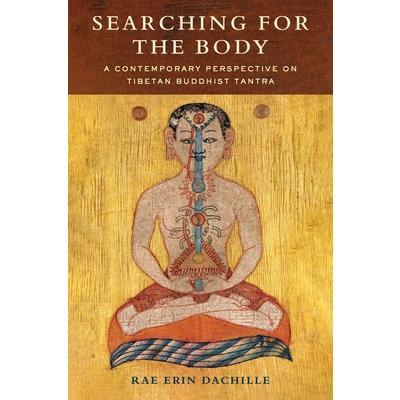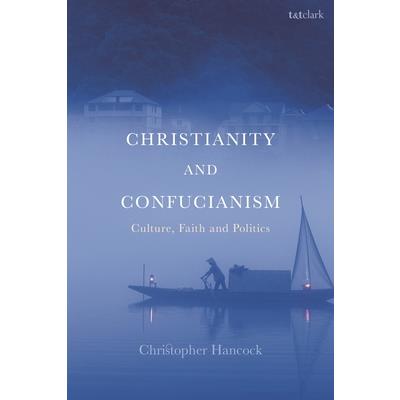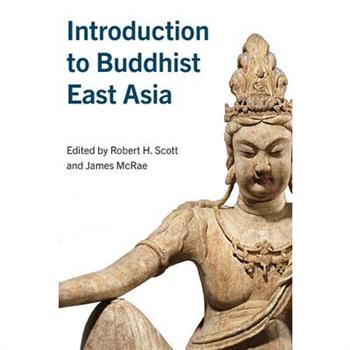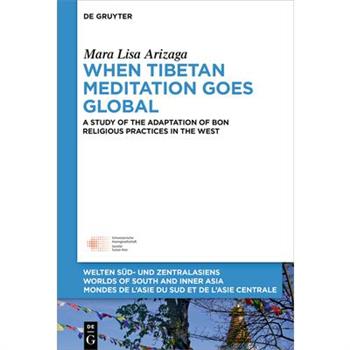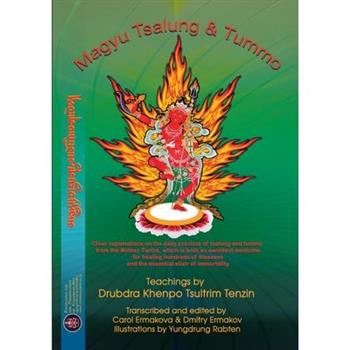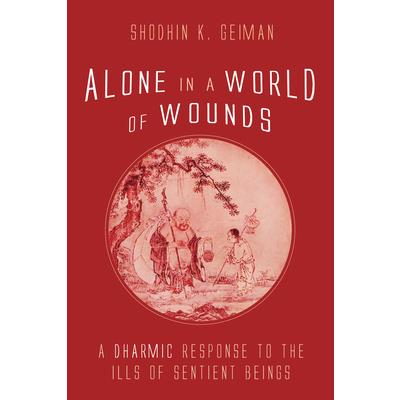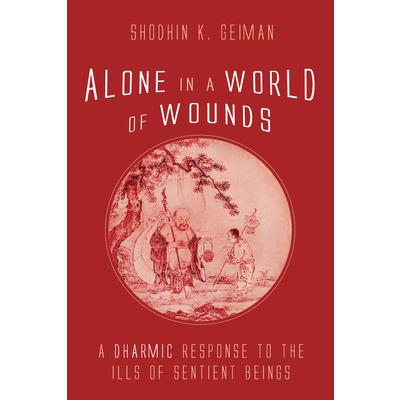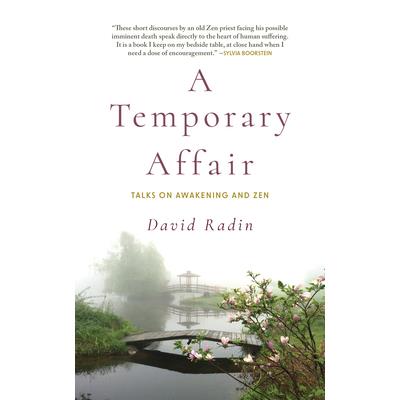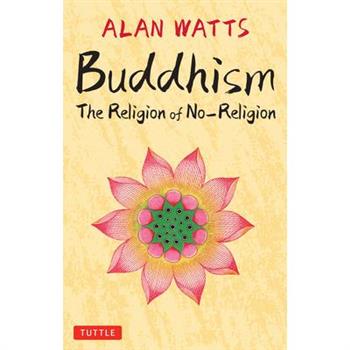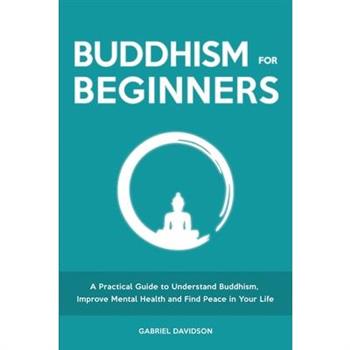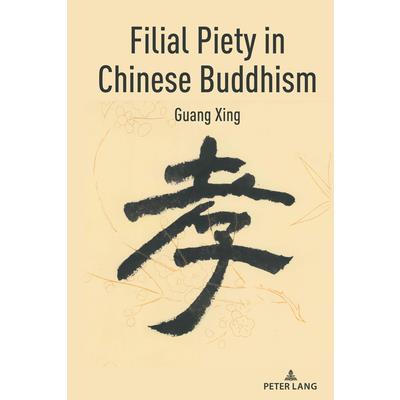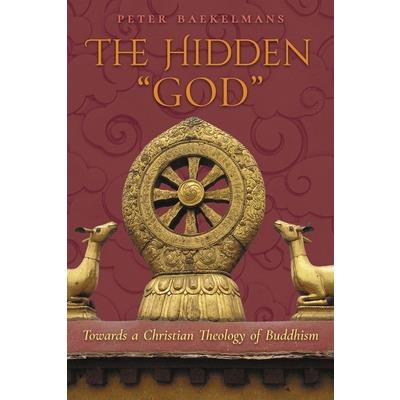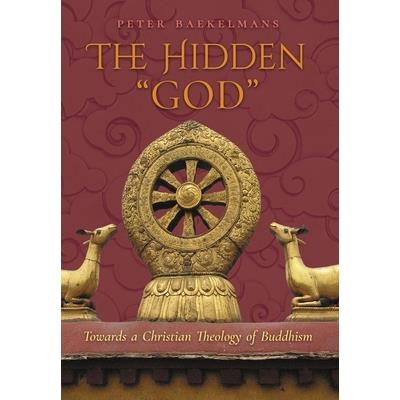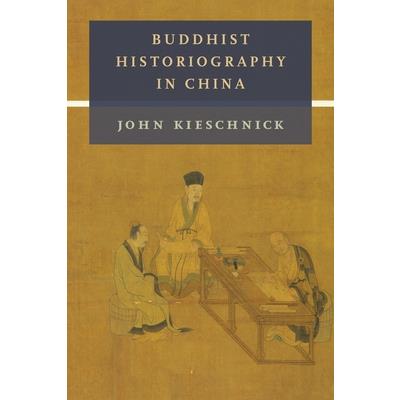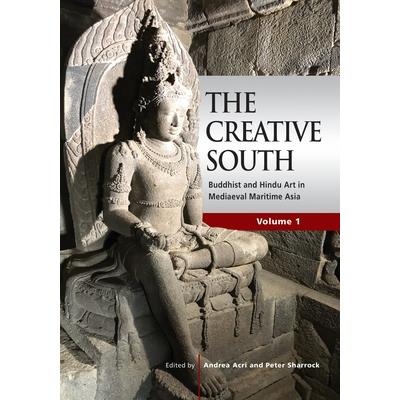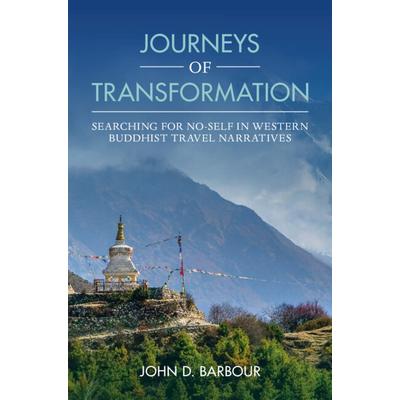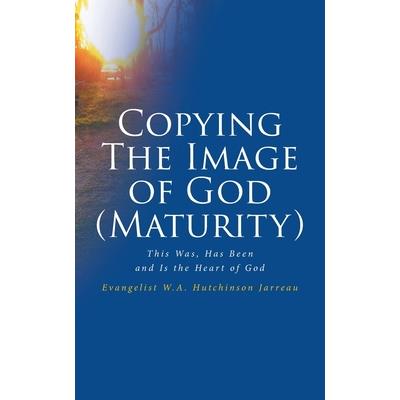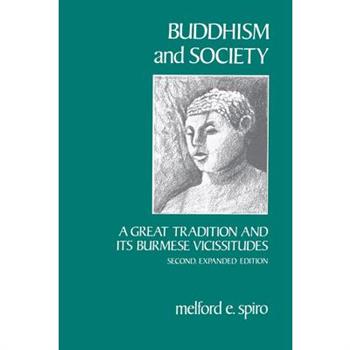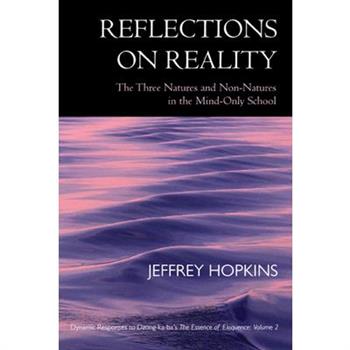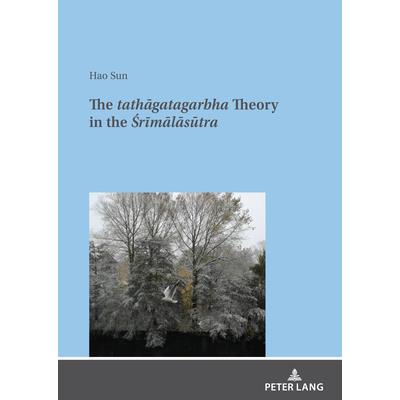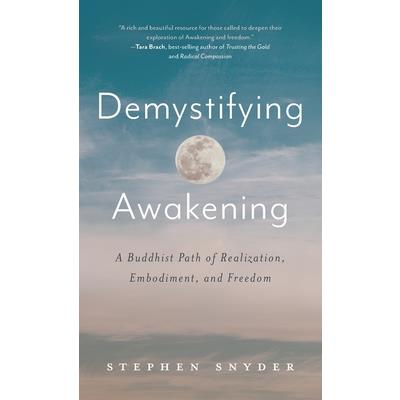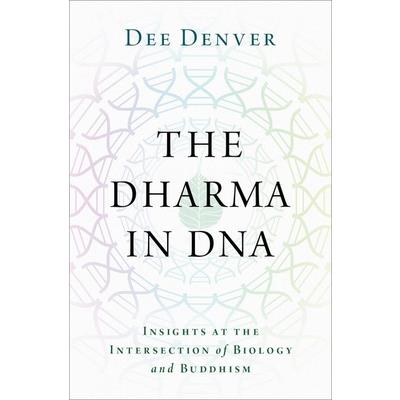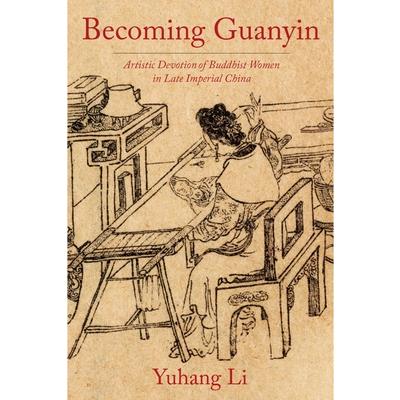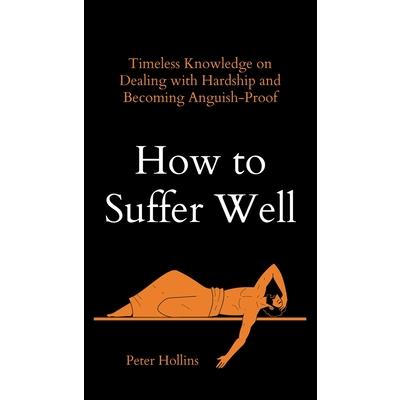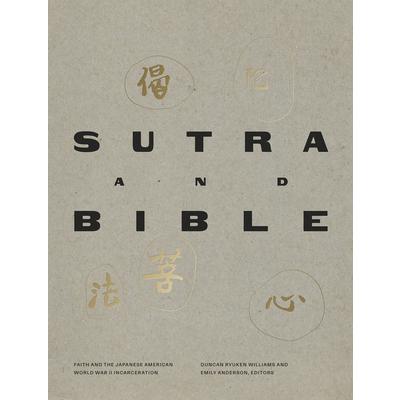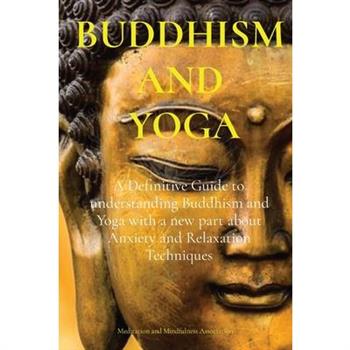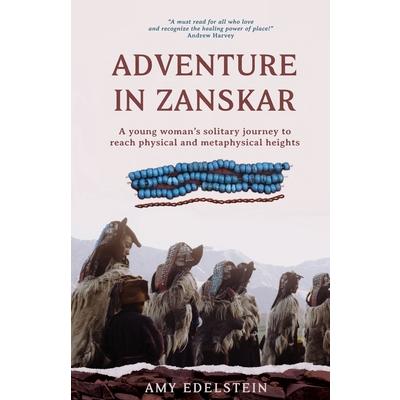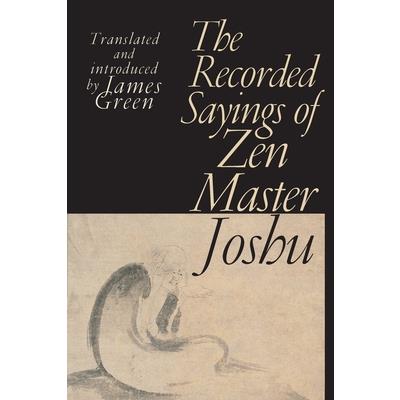Searching for the Body
In the early fifteenth century, two Tibetan monks debated how to transform the body ritually into a celestial palace inhabited by buddhas. The discussion between Ngorchen Künga Zangpo and Kh矇drupj矇 G矇lek Pelzangpo concerned the mechanics of this tantric ritual practice, known as body mandala, as well as the most reliable sources to follow in performing it. As representatives of the Sakya and emerging Geluk traditions respectively, these authors spoke for communities of Buddhist practitioners vying for patronage and prestige in an evolving Tibetan scholastic culture. Their debate witnessed clashes between imagination and deception, continuity and rupture, and tradition and innovation. Searching for the Body demonstrates the significance of the body mandala debate for understandings of Tibetan Buddhism as well as conversations on representation and embodiment occurring across the disciplines today. Rae Erin Dachille explores how Ngorchen and Kh矇drup used citational practice as a tool for making meaning, arguing that their texts reveal a deep connection between ritual mechanics and interpretive practice. She contends that this debate addresses strikingly contemporary issues surrounding interpretation, intertextuality, creativity, essentialism, and naturalness. Buddhist ideas about the construction of meaning and the body offer new ways of understanding representation, which Dachille illuminates in an epilogue that considers Glenn Ligon's engagement with Robert Mapplethorpe's photography. By placing Buddhist thought in dialogue with contemporary artistic practice and cultural critique, Searching for the Body offers vital new perspectives on the transformative potential of representations in defining and transcending the human.
Christianity and Confucianism
Christianity and Confucianism: Culture, Faith and Politics, sets comparative textual analysis against the backcloth of 2000 years of cultural, political, and religious interaction between China and the West. As the world responds to China's rise and China positions herself for global engagement, this major new study reawakens and revises an ancient conversation. As a generous introduction to biblical Christianity and the Confucian Classics, Christianity and Confucianism tells a remarkable story of mutual formation and cultural indebtedness. East and West are shown to have shaped the mind, heart, culture, philosophy and politics of the other - and far more, perhaps, than either knows or would want to admit. Christopher Hancock has provided a rich and stimulating resource for scholars and students, diplomats and social scientists, devotees of culture and those who pursue wisdom and peace today.
Introduction to Buddhist East Asia
This anthology provides an accessible introduction to East Asian Buddhism, focusing specifically on China, Korea, and Japan. It begins with a detailed historical introduction that includes an overview of the development of the various schools of Buddhism in East Asia and traces the transmission of Buddhism from Northwest India to China in the first century CE, and then to Korea and Japan in the fourth and sixth centuries CE. The first part of the book contains five chapters that offer creative pedagogies that can help college professors infuse East Asian Buddhism into their courses. The second part includes six interdisciplinary chapters that explore thematic links between East Asian Buddhism and religious studies, philosophy, film studies, literature, and environmental studies.
Being Guru Rinpoche
The book Being Guru Rinpoche shows how to understand and engage with a traditional Tibetan tantric meditation practice (sadhana) and relate it to the lived complexity of our daily life. The ritual focuses on living within the mandala of Padmasambhava, also known as Guru Rinpoche, and becoming inseparable from the Guru in his Eight Manifestations. The root text is from the terma tradition of Chhimed Rigdzin Lama (C. R. Lama), one of the great Nyingma lamas of the modern period. The text is given in Tibetan, with pronunciation (for reciting) and each verse is translated, with commentary. It can be used as a meditation practice text for those wishing to do so.James Low's overall commentary is based on an edited transcript of various talks and is offered as a way for western people to engage with tantric practice. The text itself is from the Nyingmapa tradition of Tibetan Buddhism and is a treasure text (or terma) revealed by Nuden Dorje, a 19th century terton of whom C. R. Lama was a recognised incarnation. James Low first translated it with C. R. Lama in the 1970's and it became the most frequently practised larger text amongst his students.This ritual text is very important and powerful because of the depth of its content and the shortness of its lineage, in other words, its closeness to Padmasambhava, the root of all the Nyingma lineages.For those in any tradition of Tibetan Buddhism the commentary illuminates how symbolism is used as a method of transforming samsara into nirvana. Transformation is the distinctive method of tantra. For the general reader the text provides a way of revisioning personal identity and purpose.
Four Great Books of Tibetan Gnomic Verses
Tibetans have lived on the Qinghai-Tibetan Plateau known as the roof of the world ever since over 4000 years ago, mainly inhabiting in the region of the Yarlung Tsangpo River. According to records of historical books written in Chinese, Tibetan people derived from the Western Qiang people in the Western Han and Eastern Han Dynasties, which proves that they belonged to China long ago. With the long-term exchange with people from China's hinterland, their range of activity has been expanding. At present, Tibetan people mainly live in Tibet, Sichuan Province, Qinghai Province, Yunnan Province and Gansu Province. As is shown in the statistics of the seventh national population census made in 2020, the population of Tibetans counts up to 3137901. Given that Tibetans belong to the Qiang people, we need to trace back the origin of the Qiang. According to related research, human activities had appeared in Lanzhou of Gansu Province in Late Pleistocene of the quaternary period. These people, ancestors of the Qiang people, integrated with the natives around and then formed into new ethnic groups such as Tubo, Sumpa, Di, Yangtong, Yi and Tibetan. So Tibetan people share the same lineage as Chinese nation and are an indispensable part of Chinese family. Before the Tang dynasty in 7th century, the exchange between Chinese inner land and Tibet was limited by the obstruction of natural environment and underdeveloped transportation. Since the reign of Li Shimin in the Tang dynasty, their communication became more frequent after the establishment of Ancient Tangbo Road. In about March in 641, Songtsen Gampo, the 33rd ruler of the Tubo Regime, came to the Tang dynasty to propose a marriage, which was approved by Li Shimin. Since his marriage with Princess Wencheng, the integration and exchange between Han and Tibetan people started a new chapter. rincess Wencheng brought 300 classic books of divination, 60 books about distinguishing the good and evil, construction and techniques, 100 prescriptions, 4 medical works, 5 books about diagnostics, 6 kinds of medicaldevices, all kinds of grains and turnip seeds to Tibet. In addition, she also took a gilded life-size bronze statue of 12-year-old Sakaya Muni which was kept in The Jokhang in Lhasa. There are only three statues of Sakaya Muni in this world, among which the one in India had been broken and other two are now kept in Lhasa. Princess Wencheng's arrival in Tibet had promoted the development of Tibetan economy and culture and strengthened the friendship between Han and Tibet people.
When Tibetan Meditation Goes Global
This book provides an in-depth examination of the Yungdrung Bon religion in light of globalization. In its global dimension, Bon has been attracting a growing number of Westerners, particularly to its Dzogchen teachings and meditation practices. In this expansion, Bon operates in a dynamic context where forces that create changes in the tradition coexist, sometimes in tension and sometimes in tandem, with other forces that aim to preserve it. In tracing the process through which Bon has become a global religion, this monograph narrates the story of the principal figures who initially facilitated this transmission, following their journey from Tibet to India and Nepal. The narrative then moves to explore the dynamics taking place in the transmission and reception of Yungdrung Bon in Western countries, opening up a new viewpoint on the expansion of Tibetan religious traditions into the West and painting a comprehensive picture of the modern history of the Yungdrung Bon religion as narrated by its participants. In so doing, it makes an invaluable contribution to the study of Tibetan traditions in the West as well as to the wider history of religions, social anthropology, psychology, and conversion studies.
Magyu Tsalung & Tummo
"Magyu Tsalung & Tummo" is the first such detailed and richly illustrated manual for the ancient practice of yoga of winds, channels, inner heat and physical exercises. Here, Drubdra Khenpo Tsultrim Tenzin teaches a text extracted from the Mother Tantra of Yungdrung B繹n, the spiritual tradition of Tibet which stems from the Central Asian Buddha T繹npa Shenrab Miwo who predates the more widely known Indian Buddha Shakyamuni by thousands of years. While these techniques were previously reserved for those initiated into the Mother Tantra, Drubdra Khenpo has decided to share his daily practice with a wider audience because these methods have the potential to bring profound benefit not only for the development of meditation but also for health. The tsalung and tummo techniques explained in detail here can be practised safely, but it is advisable to receive scriptural authorisation and further instructions from the master in order to avoid common pitfalls and further develop your practice.
Taixu’s ’on the Establishment of the Pure Land in the Human Realm’
In this book, Charles B. Jones provides the first English language translation of one of the most important texts of modern Chinese Buddhism: monk-reformer Taixu's 'On the Establishment of the Pure Land in the Human Realm'. The essay, written in 1926 as part of Taixu's attempt to revive Chinese Buddhism with a Humanistic Buddhist approach, incorporates Western thought into a reconstruction of the idea of the 'Pure Land in the human realm'. In his commentary on the text, Jones argues that it has been widely misunderstood and mischaracterized. Jones demonstrates that, besides laying out the very modern idea of the Pure Land in the human realm as a slogan for Buddhist engagement with the problems of the modern world, the essay does not, as commonly assumed, discourage practices leading to rebirth in the Pure Land. He also shows that the 'human realm' can mean anywhere in Buddhist cosmology that humans reside, and that the essay's attempts to reconcile Buddhism with modern science is tentative and incomplete. Jones reveals that the essay promotes visions of both paradises and utopias, and that Taixu supports his ideas with many lengthy sutra quotations. The book concludes with an examination of how Taixu's followers developed the idea of the Pure Land in the human realm into a more coherent and modernized ideal.
Alone in a World of Wounds
When Buddhism came to the West in the 1960s, many were eager to adapt it straightaway to the prevailing social and intellectual currents of its new home. One of those adaptations was the creation of a ""socially engaged"" Buddhism that could stand alongside similar developments in Christian and Jewish thought. It seemed like a good idea at the time. Beginning with what the tradition calls the path of ""the holy life,"" a life free of every attachment to self and the delusions to which it gives rise, Geiman draws attention to the unique contribution the Dharma makes to one's understanding of the world, one's place within it, and the nature of wise and compassionate action in the face of human hardship. Along the way, he shows the limits of using the teaching of the Buddha and the Dharma Ancestors as support for social and political agendas of any kind. What emerges is a description of a noble life free of pretense and guile, which fearlessly and unshakably bears witness to the truth of our conditioned nature in the midst of human hardship--a life best described as standing alone in a world of wounds.
A True Person of No Rank
In A True Person of No Rank, Joseph Bobrow takes a fresh look at Buddha's vision for an awakened person and her awakened activity. He examines the true self (also referred to as no-self) that is at its heart, and unpacks some misunderstandings that can hinder us on the path and impede the distinctive, empowered expression of our realization. He explores a true person of no rank, a Zen expression of no-self, and the notion of an agent of compassion. It takes an insubstantial person of substance, (not fixed or permanent but grounded) not only to survive these dire times but to actively participate in saving the planet and healing the world. It takes a differentiated person, an agent of compassion, to bring to bear the insights
Alone in a World of Wounds
When Buddhism came to the West in the 1960s, many were eager to adapt it straightaway to the prevailing social and intellectual currents of its new home. One of those adaptations was the creation of a ""socially engaged"" Buddhism that could stand alongside similar developments in Christian and Jewish thought. It seemed like a good idea at the time. Beginning with what the tradition calls the path of ""the holy life,"" a life free of every attachment to self and the delusions to which it gives rise, Geiman draws attention to the unique contribution the Dharma makes to one's understanding of the world, one's place within it, and the nature of wise and compassionate action in the face of human hardship. Along the way, he shows the limits of using the teaching of the Buddha and the Dharma Ancestors as support for social and political agendas of any kind. What emerges is a description of a noble life free of pretense and guile, which fearlessly and unshakably bears witness to the truth of our conditioned nature in the midst of human hardship--a life best described as standing alone in a world of wounds.
A Temporary Affair
Transcribed talks given by a Zen master who believes he is facing death. The teachings are down to death while being luminous and transcendent. Rave reviews from bestselling Buddhist authors including Sylvia Boorstein, Jack Kornfeld, Norman Fischer and many others. The book is for beginning and advanced meditators alike, and would fall into categories of General Buddhism, Zen Buddhism, Meditation, Mindfulness, and Health and Healing. Though it is written from a Zen perspective, it is accessible to meditators from all traditions.The book would also be of great comfort for anyone going through major life health events. Anyone feeling anxiety about their own mortality would find solace and inspiration here.
The Chinese Liberal Spirit
Xu Fuguan (1903-1982) was one of the most important Confucian scholars of the twentieth century. A key figure in the Nationalist Party, Xu was involved in the Chinese civil war after World War II and in the early years of the Nationalist government in Taiwan. He never ceased to believe that democracy was the way forward for the Chinese nation. Making his ethical and political thought accessible to English-speaking readers for the first time, these essays analyze the source of morality and how morality must be realized in democratic government; they also provide a sharp contrast to the claim that democracy is not suitable for China--or that Confucian government should be meritocracy, not democracy. They also share the reflections of a man who lived through the Chinese revolution and remained strongly critical of the governments in both the People's Republic of China and Taiwan.
Essential Ethics
Modern life presents us with an infinite number of ethical challenges. How are we to know what is the wisest course of action? Should we look out for our own interests first and then worry about others? Or does our self cherishing attitude deny us the very happiness we seek? Do our individual actions really matter in a world that is beset by so many problems?This book presents the teaching on ethics that was given more than 2,600 years ago by the Buddha Shakyamuni. The lessons from this enlightened human being are so fundamental to the human condition that they remain fully relevant today. Buddhist ethical guidelines have the potential to bring peace and harmony-from the individual to the universal level. An ethical lifestyle is the foundation for and prerequisite to all higher spiritual development, regardless of religious beliefs. The importance of ethics cannot be overemphasized, and this book offers a full discussion of the Buddhist approach.
Buddhism
"Although Alan Watts' famous voice and happy laughter are missing now, his penetrating vision of Buddhism remains, and his lectures become brilliant prose in book form." --Publishers Weekly Buddhism: The Religion of No-Religion presents six powerful essays by Alan Watts, the guru for an entire generation of 20th century thinkers, writers and poets. Watts was an engaging speaker and an icon of America's Beat and Counterculture movements. His friends included Aldous Huxley, Lawrence Ferlinghetti, John Cage and Joseph Campbell. In this book, Watts explores all aspects of Buddhism--from its roots in ancient India to the explosion of interest in Zen and Tibetan Buddhist thought in the West. The fascinating topics covered in this book include: Finding a Middle Way: How a spiritual path to awakening is formed not just by avoiding extreme indulgence but extreme denial as wellThe Religion of No-Religion: How Buddhism eschews any particular dogma and instead acts as a guide to understanding oneselfBuddhism as Dialogue: How Zen teaches us that we are one with the world and so as we learn to navigate the world, we must also learn about ourselvesWatts traces the early beginnings of Buddhism, outlines the differences between Buddhism and other religions, and reviews the Four Noble Truths and The Eightfold Path. Buddhism: The Religion of No-Religion is a valuable reminder of the peace to be found by looking inward.
Heart Essence
We live in uncertain times, and to engage in the world to serve the welfare of others requires great courage and dedication. In Buddhism, a bodhisattva is one whose life is dedicated to awaken in the service of others. A bodhisattva's intention of bodhicitta, the awakening mind, is rooted in compassion, love and the courage to live in a challenging world, transforming adversity into the path of awakening. In Heart Essence, Rob Preece brings a fresh enquiry into the qualities that support a bodhisattva's journey, including many of the psychological challenges encountered in the process of awakening. He draws on his years of experience both as a psychotherapist and a tantric practitioner to explore what needs to be cultivated to enhance the qualities of bodhicitta and also how we can embody these in our lives. This will be of value to those who aspire - particularly as tantric practitioners - to the life of a bodhisattva.
Buddhism, Knowledge and Liberation
Buddhism is essentially a teaching about liberation - from suffering, ignorance, selfishness and continued rebirth. Knowledge of 'the way things really are' is thought by many Buddhists to be vital in bringing about this emancipation. This book is a philosophical study of the notion of liberating knowledge as it occurs in a range of Buddhist sources. Buddhism, Knowledge and Liberation assesses the common Buddhist idea that knowledge of the three characteristics of existence (impermanence, not-self and suffering) is the key to liberation. It argues that this claim must be seen in the context of the Buddhist path and training as a whole. Detailed attention is also given to anti-realist, sceptical and mystical strands within the Buddhist tradition, all of which make distinctive claims about liberating knowledge and the nature of reality. David Burton seeks to uncover various problematic assumptions which underpin the Buddhist worldview. Sensitive to the wide diversity of philosophical perspectives and interpretations that Buddhism has engendered, this book makes a serious contribution to critical and philosophically aware engagement with Buddhist thought. Written in an accessible style, it will be of value to those interested in Buddhist Studies and broader issues in comparative philosophy and religion.
Chinese Buddhism Today
This book conveys the ethos of Fo Guang Shan, 'Buddha's Light Mountain', by focusing on the views and activities of its founder and leader, the Ven. Hsing Yun. Fo Guang Shan was founded in Taiwan in 1967 by Hsing Yun (b.1927), who had fled to Taiwan from mainland China in 1949. It stands in the Chinese tradition of Mahāyāna Buddhism and, more specifically, is a form of Buddhism which in English is usually referred to as 'Humanistic Buddhism' or as 'engaged Buddhism'.Humanistic Buddhism owes its origin to the Chinese monk Tai Xu (1890-1947). He found the Buddhism that surrounded him in China dreary and moribund, preoccupied with rituals for the dead, and offering nothing to help or guide people living in the world outside monasteries. His determination to reverse this decay centred on the idea that it was the vocation of a Mahāyāna Buddhist to do good to others, finding their own spiritual benefit in benefitting society.Hsing Yun has been a devoted disciple of Tai Xu. It is telling that he founded a seminary before he founded a monastery, and has laid huge emphasis on education. To make Buddhism widely attractive and relevant he has incorporated every influence available. Gifted with a benign personality, he has turned his seemingly boundless energy and prodigious versatility to creating an institution that presents Buddhism as a potential source for benefitting society through making life enjoyable.
Resting in Awareness
Resting in Awareness: Mahamudra and Satipatthana Meditations from the Awareness Sutra based on the Third Karmapa Rangjung Dorje's commentary and explanations by his student Sherab Rinchen Compiled, translated, paraphrased and introduced by Svenja Schmitt Buddha Shakyamuni once was asked by experienced practitioners of another spiritual tradition: Exactly how do physical, verbal and mental actions performed in this life lead to consequences experienced in future lives? How is it possible to see things as they really are? In the Mahayana sutra Resting in Awareness, the Buddha answered those questions with a set of meditations. The practice of awareness that he taught in this discourse is the direct path to awakening and the realization of absolute bodhicitta. This method consists of alternating between analyzing and resting and is the Vajra Meditation of Mahamudra. This book is intended for advanced practitioners who are competent to engage on their own in the practice of calm abiding combined with insight meditation. It contains: - An introduction to the Awareness Sutra, its Tibetan translation, and the commentaries written by the Third Karmapa Rangjung Dorje and Sherab Rinchen; - 23 step-by-step lessons with advice from those two Kagyu masters; - 70 exercises, paraphrased from the sutra and supplemented by meditation instructions from contemporary teachers of the Karma Kagyu lineage; - An overview of how the practice of awareness is understood in different Buddhist schools; - A Tibetan-English translation of the sutra passages; - Key terms in English, Tibetan and Pali.
Filial Piety in Chinese Buddhism
This book investigates how Buddhism gradually integrated itself into the Chinese culture by taking filial piety as a case study because it is an important moral teaching in Confucianism and it has shaped nearly every aspect of Chinese social life. The Chinese criticized Buddhism mainly on ethical grounds as Buddhist clergies left their parents' homes, did not marry, and were without offspring--actions which were completely contrary to the Confucian concept and practice of filial piety that emphasizes family life. Chinese Buddhists responded to these criticisms in six different ways while accepting good teachings from the Chinese philosophy. They also argued and even refuted some emotional charges such as rejecting everything non-Chinese. The elite responded in theoretical argumentation by (1) translations of and references to Buddhist scriptures that taught filial behavior, (2) writing scholarly refutations of the charges of unfilial practices, such as Qisong's Xiaolun (Treatise of Filial Piety), (3) interpreting Buddhist precepts as equal to the Confucian concept of filial piety, and (4) teaching people to pay four kinds of compassions to four groups of people: parents, all sentient beings, kings, and Buddhism. In practice the ordinary Buddhists responded by (1) composing apocryphal scriptures and (2) popularizing stories and parables that teach filial piety, such as the stories of Shanzi and Mulian, by ways of public lectures, painted illustrations on walls and silk, annual celebration of the ghost festival, etc. Thus, Buddhism finally integrated into the Chinese culture and became a distinctive Chinese Buddhism.
The Hidden God
"Theology" means "discourse about god." Christian theology is a reflection on the Christian faith in which God takes a central place. Therefore, the Christian theology of other religions seeks to understand if and how "God" as Christians call their experience of Him may be present in the thought, devotion, and ritual of those other religions. Christian theology of Buddhism is then a Christian reflection on the Buddhist faith in "god" or "gods." Now, Buddhist teaching contains many seeming contradictions (as does Christian teaching). Accepting these, and looking for clues to understand how they came about and how they might be reconciled, is not only an intellectual challenge but also a religious duty. The Hidden "God" feels like a detective story, taking the reader along on an exacting investigation of the manifold themes, concepts, and persons of the different Buddhist faith traditions in order to discern whether they can be related to the Christian understanding of who God is. The result, which is both complex and simple, will enable readers to take steps toward uniting both religions in the mystery that God or the Dharma is. "This book is courageous and necessary: courageous because it breaks a taboo of placing interreligious dialogue on a theological level; necessary because it brings to light a sincere comparative study of the relationship between faith and practice-which is common ground for all the great spiritual traditions."-GUGLIELMO DORYU CAPPELLI, Zen Anshin temple, Rome"The 'god' question is almost absent from Buddhist scriptures and teachings, yet everywhere present in the searching eyes of a Christian. Peter Baekelmans is well equipped to tackle this elusive question owing to his many years in Japan and long acquaintance with several branches and schools of Buddhism."-FR JACQUES SCHEUER, author of Wisdom and Compassion "As Peter Baekelmans is a renowned theologian and scholar of Buddhism, whom I consider the Christian expert on esoteric Buddhism-both theoretically and practically-the reading of this challenging work will be deeply illuminating."-MARTIN REPP, author of The One God and the Other Gods "The Hidden 'God' takes us along with the author on a journey to the discovery of Buddhism and its many facets. His path-breaking manner of comparing Buddhism to his native Christianity with a view to enhancing the understanding of both is immensely respectful."-ALICIA GUINOT, Europe Books
The Hidden God
"Theology" means "discourse about god." Christian theology is a reflection on the Christian faith in which God takes a central place. Therefore, the Christian theology of other religions seeks to understand if and how "God" as Christians call their experience of Him may be present in the thought, devotion, and ritual of those other religions. Christian theology of Buddhism is then a Christian reflection on the Buddhist faith in "god" or "gods." Now, Buddhist teaching contains many seeming contradictions (as does Christian teaching). Accepting these, and looking for clues to understand how they came about and how they might be reconciled, is not only an intellectual challenge but also a religious duty. The Hidden "God" feels like a detective story, taking the reader along on an exacting investigation of the manifold themes, concepts, and persons of the different Buddhist faith traditions in order to discern whether they can be related to the Christian understanding of who God is. The result, which is both complex and simple, will enable readers to take steps toward uniting both religions in the mystery that God or the Dharma is.
Buddhist Historiography in China
Winner, 2023 Toshihide Numata Book Award, Numata Center for Buddhist Studies at the University of California, Berkeley Since the early days of Buddhism in China, monastics and laity alike have expressed a profound concern with the past. In voluminous historical works, they attempted to determine as precisely as possible the dates of events in the Buddha's life, seeking to iron out discrepancies in varying accounts and pinpoint when he delivered which sermons. Buddhist writers chronicled the history of the Dharma in China as well, compiling biographies of eminent monks and nuns and detailing the rise and decline in the religion's fortunes under various rulers. They searched for evidence of karma in the historical record and drew on prophecy to explain the past. John Kieschnick provides an innovative, expansive account of how Chinese Buddhists have sought to understand their history through a Buddhist lens. Exploring a series of themes in mainstream Buddhist historiographical works from the fifth to the twentieth century, he looks not so much for what they reveal about the people and events they describe as for what they tell us about their compilers' understanding of history. Kieschnick examines how Buddhist doctrines influenced the search for the underlying principles driving history, the significance of genealogy in Buddhist writing, and the transformation of Buddhist historiography in the twentieth century. This book casts new light on the intellectual history of Chinese Buddhism and on Buddhists' understanding of the past.
The Creative South
This edited volume programmatically reconsiders the creative contribution of the littoral and insular regions of Maritime Asia to shaping new paradigms in the Buddhist and Hindu art and architecture of the medieval Asian world. Far from being a mere southern conduit for the maritime circulation of Indic religions, in the period from ca. the 7th to the 14th century those regions transformed across mainland and island polities the rituals, icons, and architecture that embodied these religious insights with a dynamism that often eclipsed the established cultural centres in Northern India, Central Asia, and mainland China. This collective body of work brings together new research aiming to recalibrate the importance of these innovations in art and architecture, thereby highlighting the cultural creativity of the monsoon-influenced Southern rim of the Asian landmass. "Although Maritime Asia in mediaeval times was not as densely populated as the agrarian hinterland, Asia's coasts were highly urbanized. The region from southern India to south China was a heterogeneous blend of cultures, leavened with a strong interest in trade. This cosmopolitan society afforded plentiful opportunities for artists to find patrons and develop individual styles and aesthetic sensibilities. In the bustling ports of Asia's south coast, rulers sought to embellish their prestige and attract foreign merchants by sponsoring the development of monumental complexes and centres of learning and debate. These educational institutions attracted teachers from all over Asia, and in their cloisters they developed new intellectual frameworks which were reflected in works of art and architecture. Scholars moved frequently by sea, influencing and being influenced by other foreigners such as Japanese and central Asians who were also attracted to these places.
Journeys of Transformation
Western Buddhist travel narratives are autobiographical accounts of a journey to a Buddhist culture. Dozens of such narratives have since the 1970s describe treks in Tibet, periods of residence in a Zen monastery, pilgrimages to Buddhist sites and teachers, and other Asian odysseys. The best known of these works is Peter Matthiessen's The Snow Leopard; further reflections emerge from thirty writers including John Blofeld, Jan Van de Wetering, Thomas Merton, Oliver Statler, Robert Thurman, Gretel Ehrlich, and Bill Porter. The Buddhist concept of 'no-self' helps these authors interpret certain pivotal experiences of 'unselfing' and is also a catalyst that provokes and enables such events. The writers' spiritual memoirs describe how their journeys brought about a new understanding of Buddhist enlightenment and so transformed their lives. Showing how travel can elicit self-transformation, this book is a compelling exploration of the journeys and religious changes of both individuals and Buddhism itself.
Copying The Image of God (Maturity)
Though I was not on the Isle of Patmos as John, I was humbled and moved during the wee hours of April 22, 2013, when I saw these words: "Copying the Image of God (Maturity)." As I sought the Lord concerning what He had shown me, He revealed to me His desire from the beginning (Genesis) for man to have His image. I gained insights to teach and share with believers, those yet to be saved, and all that have an ear to hear what the Spirit is saying to the church on this matter. Truly this was, has been, and is the heart of God for mankind everywhere. "And God said, let us make man in our image, after our likeness" (Genesis 1:26a). The Lord confirmed the writing of this book during the end-time as we prepare for Jesus's return for His church. Now in humble obedience and for His Glory, we proceed in the name of Jesus with "Copying the Image of God (Maturity)."
Calm Breath, Calm Mind
Discover ancient Tibetan breath practices for calming your mind and improving your health in this plain-English guide. Over millennia, many Eastern traditions have developed practices that use the powerful healing energy of breath to treat physical, emotional, and mental problems. In Chinese, this energy is called chi; in Sanskrit it is called prana; and in Tibetan it is called lung. Lung is life-giving energy that moves through our bodies. A lack or imbalance of lung can create illnesses of body and mind or cause emotional struggles such as confusion, anger, and sadness. In this book, Geshe YongDong Losar, a scholar and monk in the ancient B繹n tradition of Tibet, guides us through time-tested practices to help balance our lung. His deep knowledge--garnered through years of study and practice--renders the practices simple and achievable, creating a clear path for us toward greater calmness, strength, and clarity. "Over and over I have personally witnessed, both in myself and in my students, the breath's clear potential to heal and deeply transform lives. I truly believe that in the future such practices will play an important role as a medicine for preventing and treating physical, emotional, and mental maladies. I am glad that Geshe YongDong is making these practices widely available, and I'm sure that by doing so, he is bringing benefit to countless lives." --from the foreword by Geshe Tenzin Wangyal Rinpoche
The Religions of Tibet
"No one is better qualified than Tucci to write a general yet comprehensive work on such a complex subject. His explorations in Tibet, extensive personal experiences, direct observations of ritual, and unmatched textual knowledge are graciously combined in this valuable and highly readable volume."--Barbara Nimri Aziz, Journal of Asian Studies "Tucci's most significant contribution is his application of a systematic analysis of parallels and interconnections among the religious practices of Tibetans. . . . We have both a thorough analysis of significant texts as well as a description and appreciation of rituals, architecture, and artifacts."--Francis V. Tiso, Cross Currents "[Readers] are not soon to find a more informative, comprehensive rendering of the religions of Tibet-minus all the myths and by a scholar as extraordinary as Giuseppe Tucci."--A. Torn Grunfeld, Focus on Asian Studies "We have here a synthesis of Tucci's knowledge and insight into one of the most extraordinary of the world's great cultures."--Ninian Smart, Times Literary Supplement
Buddhism and Society
The current Western interest in Buddhism and other Eastern religions is--among other reasons--both the result of and the stimulation for an entire library of books purporting to bring the Wisdom of the East to an audience for whom the wisdom of the West has failed. This book is not an example of that genre. It is an attempt to interpret Buddhism in the light of some current theories about religion. As a work of scholarship, rather than a homiletic tract or an apologetic treatise, its aim is to understand Buddhism as one historical variant of the generic human attempt to find meaning and hope in a sacred order that transcends the mundane order of existence; its aime is not to encourage or discourage either a devotional or a soteriological interest in Buddhism.
Reflections on Reality
This is the second volume in Jeffrey Hopkins's valuable series on the Mind-Only School of Buddhism. Dzong-ka-ba (1357-1419) is generally regarded as one of the greatest Tibetan philosophers, and his "Mind-Only" discourse on emptiness is considered a landmark in Buddhist philosophy. In Volume 2, Emptiness in the Mind-Only School of Buddhism, Hopkins provided a translation of the introduction and section on the Mind-Only School in The Essence of Eloquence. The present volume places this enigmatic and influential exposition in its historical and philosophical contexts. Reflections on Reality conveys the intellectual vibrancy of the different cultural interpretations of this text and expands the key philosophical issues it addresses.
The tathāgatagarbha Theory in the Śrīmālāsūtra
In this thesis the author firstly investigates various terms related to tathāgatagarbha in the Śrīmālāsūtra. Secondly he focuses on the languages features of its Sanskrit fragments in the Sch繪yen Collection. It turns out that none of their noticeable language features can ultimately suggest the school-affiliation of the Śrīmālāsūtra. Thirdly he analyzes its paleographical features. Besides, the author conducts an initial study of textual history the Śrīmālāsūtra, and discusses the older recension(s) of the Śrīmālāsūtra based on the Sanskrit morphology, criteria of lectio difficilior and lectio facilior, ascertainment of later contents in the course of transmission, and the development of Buddhist doctrine. Finally he provides a careful textual collation, and makes an annotated translation.
Demystifying Awakening
"A rich and beautiful resource for those called to deepen their exploration of Awakening and freedom."-Tara Brach, best-selling author of Trusting the Gold and Radical CompassionSee the potential that is within each of us-the realization and embodiment of our true natureWith Demystifying Awakening, senior meditation teacher Stephen Snyder skillfully marks the subtle path of the Awakening process. With loving care, personal examples, and gentle suggestions, Stephen plants the seeds of practice and meditation by: explaining Awakening in an accessible way that draws on Zen and Theravada Buddhist traditions;guiding readers through more than thirty foundational and advanced meditations and practices that support each step on the path of realization;offering advice for identifying and working with resistances to Awakening; andencouraging the embodiment and lived expression of realization through an exploration of the pāramīs, the Buddhist perfections of behavior.Demystifying Awakening transmits a practice path for Awakening in this lifetime."A unique and profound manual . . . that clearly and succinctly unveils the path, and process, of Awakening as practiced, lived, and taught by Stephen Snyder."-Judson Brewer, MD, PhD, NYT best-selling author of Unwinding Anxiety and The Craving Mind"Stephen is a friendly, helpful, and sweetly encouraging guide. In his pages, you feel like you're coming home to who you've always been: wakeful, loving, contented, and wise."-Rick Hanson, PhD, NYT best-selling author of Neurodharma and Buddha's Brain"A wise map and a powerful reminder that while the path is in a sense a pathless path, and leads right back to here and now, that doesn't mean Awakening isn't real."-Henry Shukman, author of One Blade of Grass and guiding teacher of Mountain Cloud Zen Center
The Instructions of Gampopa
Khenpo Karthar Rinpoche delivers profound insights in direct and inspiring language. In this commentary on the Precious Garland, one of Gampopa's masterworks, he outlines what practitioners of varying levels need to know to perfect their spiritual practice. He instructs on the correct view, meditation, and conduct, and offers frank answers to common questions concerning obstacles to Dharma practice. Gampopa (1070-1153) was the father of the Kagyu tradition and foremost student of Milarepa.
The Aura of Confucius
The Aura of Confucius is a ground-breaking study that reconstructs the remarkable history of Kongzhai, a shrine founded on the belief that Confucius' descendants buried the sage's robe and cap a millennium after his death and far from his home in Qufu, Shandong. Improbably located on the outskirts of modern Shanghai, Kongzhai featured architecture, visual images, and physical artifacts that created a 'Little Queli, ' a surrogate for the temple, cemetery, and Kong descendants' mansion in Qufu. Centered on the Tomb of the Robe and Cap, with a Sage Hall noteworthy for displaying sculptural icons and not just inscribed tablets, Kongzhai attracted scholarly pilgrims who came to experience Confucius's beneficent aura. Although Kongzhai gained recognition from the Kangxi emperor, its fortunes declined with modernization, and it was finally destroyed during the Cultural Revolution. Unlike other sites, Kongzhai has not been rebuilt and its history is officially forgotten, despite the Confucian revival in contemporary China.
Renunciation and Longing
Through the eventful life of a Himalayan Buddhist teacher, Khunu Lama, this study reimagines cultural continuity beyond the binary of traditional and modern. In the early twentieth century, Khunu Lama journeyed across Tibet and India, meeting Buddhist masters while sometimes living, so his students say, on cold porridge and water. Yet this elusive wandering renunciant became a revered teacher of the Fourteenth Dalai Lama. At Khunu Lama's death in 1977, he was mourned by Himalayan nuns, Tibetan lamas, and American meditators alike. The many surviving stories about him reveal significant dimensions of Tibetan Buddhism, shedding new light on questions of religious affect and memory that reimagines cultural continuity beyond the binary of traditional and modern. In Renunciation and Longing, Annabella Pitkin explores devotion, renunciation, and the teacher-student lineage relationship as resources for understanding Tibetan Buddhist approaches to modernity. By examining narrative accounts of the life of a remarkable twentieth-century Himalayan Buddhist and focusing on his remembered identity as a renunciant bodhisattva, Pitkin illuminates Tibetan and Himalayan practices of memory, affective connection, and mourning. Refuting long-standing caricatures of Tibetan Buddhist communities as unable to be modern because of their religious commitments, Pitkin shows instead how twentieth- and twenty-first-century Tibetan and Himalayan Buddhist narrators have used themes of renunciation, devotion, and lineage as touchstones for negotiating loss and vitalizing continuity.
Renunciation and Longing
Through the eventful life of a Himalayan Buddhist teacher, Khunu Lama, this study reimagines cultural continuity beyond the binary of traditional and modern. In the early twentieth century, Khunu Lama journeyed across Tibet and India, meeting Buddhist masters while sometimes living, so his students say, on cold porridge and water. Yet this elusive wandering renunciant became a revered teacher of the Fourteenth Dalai Lama. At Khunu Lama's death in 1977, he was mourned by Himalayan nuns, Tibetan lamas, and American meditators alike. The many surviving stories about him reveal significant dimensions of Tibetan Buddhism, shedding new light on questions of religious affect and memory that reimagines cultural continuity beyond the binary of traditional and modern. In Renunciation and Longing, Annabella Pitkin explores devotion, renunciation, and the teacher-student lineage relationship as resources for understanding Tibetan Buddhist approaches to modernity. By examining narrative accounts of the life of a remarkable twentieth-century Himalayan Buddhist and focusing on his remembered identity as a renunciant bodhisattva, Pitkin illuminates Tibetan and Himalayan practices of memory, affective connection, and mourning. Refuting long-standing caricatures of Tibetan Buddhist communities as unable to be modern because of their religious commitments, Pitkin shows instead how twentieth- and twenty-first-century Tibetan and Himalayan Buddhist narrators have used themes of renunciation, devotion, and lineage as touchstones for negotiating loss and vitalizing continuity.
The Dharma in DNA
There are more connections between spirituality and science than you might think... In 2004, biologist Dee Denver heard the Dalai Lama speak in Bloomington, Indiana. The famous Tibetan monk's speech that day exposed him to the centrality of impermanence in Buddhist thinking, a topic that directly connected to his mutation research in evolutionary biology. He left the event shocked and startled by the unexpected parallels between Buddhism and biology. This experience is not wholly unique to Denver. Spirituality and science are two inherently humane ways to approach our world. Why shouldn't more people look at them in tandem? In this book, Denver shares Buddhist ideas and the tradition's colonial and more recent interactions with biology. He then applies the scientific method to Buddhist principles and draws connections between Buddhist ideas and current research in biology. In doing this, he proposes a new approach to science, Bodhi science, that integrates Buddhist teachings and ethical frameworks. Denver's research supports a connected synergy between biological and Buddhist thinking. This scientific approach to Buddhism offers strong evidence supporting the validity of fundamentally Buddhist principles and logic. The book builds on historical evidence from Sri Lanka, Japan, and Tibetan Buddhism to illustrate these connections.
Becoming Guanyin
Winner, 2024 Geiss-Hsu Book Prize for Best First Book, Society for Ming Studies The goddess Guanyin began in India as the bodhisattva Avalokiteśvara, originally a male deity. He gradually became indigenized as a female deity in China over the span of nearly a millennium. By the Ming (1358-1644) and Qing (1644-1911) periods, Guanyin had become the most popular female deity in China. In Becoming Guanyin, Yuhang Li examines how lay Buddhist women in late imperial China forged a connection with the subject of their devotion, arguing that women used their own bodies to echo that of Guanyin. Li focuses on the power of material things to enable women to access religious experience and transcendence. In particular, she examines how secular Buddhist women expressed mimetic devotion and pursued religious salvation through creative depictions of Guanyin in different media such as painting and embroidery and through bodily portrayals of the deity using jewelry and dance. These material displays expressed a worldview that differed from yet fit within the Confucian patriarchal system. Attending to the fabrication and use of "women's things" by secular women, Li offers new insight into the relationships between worshipped and worshipper in Buddhist practice. Combining empirical research with theoretical insights from both art history and Buddhist studies, Becoming Guanyin is a field-changing analysis that reveals the interplay between material culture, religion, and their gendered transformations.
The King Ajātaśatru Sūtra
King Ajātaśatru is well-known among Buddhists for being misled by the Buddha's jealous brother-in-law and cousin, Devadatta, into bringing about his father's death and usurping the throne of the Kingdom of Magadha. Despite this, he also came to repent his deeds and became a sincere supporter of the Buddha. This publication presents four first English translations of sūtras on Ajātaśatru, his repentance, and the eventual assurance of his attainment of Buddhahood. The King Ajātaśatru Sūtra (Skt. Ajātaśatrukaukṛtyavinodana, Taishō No. 626) presents the process whereby bodhisattva Ma簽juśrī helped King Ajātaśatru to see the emptiness of all phenomenal existence and the original purity of mind. Through attaining these insights, the king overcame his doubts about his fate and received assurance of his eventual buddhahood. The Sūtra on King Ajātaśatru's Questions on the Five Heinous Crimes (Taishō No. 508) presents the process whereby the king will overcome his doubts by attaining rootless faith (granted to him by the Buddha) rather than through the realisation of emptiness. The Sūtra on King Ajātaśatru's Reception of his Prediction (Taishō No. 509) sees the king receive his assurance of buddhahood not while the Buddha is in the world, but rather by offering to him after he entered nirvāṇa. It Thus emphasises the transcendent nature of the Buddha's manifestation in the world. The Sūtra on the Flower Pickers (Taishō No. 510) presents a variation on the previous sūtra where the Buddha has not yet entered nirvāṇa. Our sincere wish is that readers will find these sūtra translations a fascinating and valuable addition to their understanding of Buddhism and the redemption of those who have committed grave evils.
How to Suffer Well
Your capacity to handle suffering determines where you get in life. How do you want to live?Life is tough, so you better get a helmet. Life is not a walk in the park. You'll run into pain, anguish, and obstacles. But who says that they need to affect you?Build immunity to emotional, mental, and physical discomfort and suffering. It can be trained.How to Suffer Well is a literal guidebook to defeating the voices in your head that tell you to give up. Instead, they'll be replaced with voices that tell you it'll be okay, this will pass, and life goes happily on.It might sound difficult, but this is all teachable. You'll learn how to become the most zen person you know. Wouldn't it be nice to only experience the positive side of emotions?How to tolerate the rigors of life without collapsing. Increase your mental pain tolerance to that of superhuman levels.Peter Hollins has studied psychology and peak human performance for over a dozen years and is a bestselling author. He has worked with a multitude of individuals to unlock their potential and path towards success. His writing draws on his academic, coaching, and research experience.Greatly expand your comfort zone and build layers of mental armor to ensure your happiness.Guest chapter by acclaimed blogger Jason Merchey on the balm of humor to quell suffering.Why suffering is life, but attachment is sufferingTried and true paths to overcoming sufferingDefenses against negativity, expectations, and things outside of our controlHow to live in the present, unhindered by the past or the futureHow compassion and purpose assist in suffering better
Sutra and Bible
A visual history of the role that religious teachings, practices and communities played in the WWII Japanese American experience, with essays by leading scholarsAccompanying the Japanese American National Museum's 2022 eponymous exhibition, Sutra and Bible: Faith and the Japanese American World War II Incarceration explores the role that religious teachings, practices and communities played while Japanese Americans were incarcerated during World War II. From the confines of concentration camps and locales under martial law to the battlegrounds of Europe, Japanese Americans drew on their faith to survive forced removal, indefinite incarceration, unjust deportation, family separation, military service and resettlement at a time when their race and religion were seen as threats to national security. Coedited by Emily Anderson and Duncan Ryuken Williams, Sutra and Bible weaves visual storytelling with auxiliary essays from 32 prominent voices across academic, arts and social justice communities.Contributors include: Michihiro Ama, Brooks Andrews, Anne M. Blankenship, Joanne Doi MM, Laura (Kitaji) Dominguez-Yon, Timothy Wagner, Kristen Hayashi, Jay Hirabayashi, Naomi Hirahara, Mitch Honma, Satsuki Ina, Jane Naomi Iwamura, Mas Kodani, Mark Nakagawa, Wendy Egyoku Nakao, Elizabeth Nishiura, Togo Nishiura, Nancy Kyoko Oda, Gene Oishi, Gail Okawa, Dakota Russell, Bacon Sakatani, Candice Shibata, Brandon Shimoda, George Tanabe, Todd Tsuchiya, Nancy Ukai, Jonathan van Harmelen, Karen Tei Yamashita and Mikoto Yoshida.
Reconstructing Early Buddhism
Buddhist origins and discussion of the Buddha's teachings are amongst the most controversial and contested areas in the field. This bold and authoritative book tackles head-on some of the key questions regarding early Buddhism and its primary canon of precepts. Noting that the earliest texts in Pali, Sanskrit and Chinese belong to different Buddhist schools, Roderick S. Bucknell addresses the development of these writings during the period of oral transmission between the Buddha's death and their initial redaction in the first century BCE. A meticulous comparative analysis reveals the likely original path of meditative practice applied and taught by Gautama. Fresh perspectives now emerge on both the Buddha himself and his Enlightenment. Drawing on his own years of meditative experience as a Buddhist monk, the author offers here remarkable new interpretations of advanced practices of meditation, as well as of Buddhism itself. It is a landmark work in Buddhist Studies.
Heart Drops of Kuntuzangpo
This precious set of teachings was translated by Geshe Sonam Gurung & Daniel P. Brown, Ph.D. under the Guidance of H.H. the 33rd Menri Trizin for the Pointing Out the Great Way Foundation.This book is the shortest of Shar rdza Rinpoche's trilogy on Bon Great Completion by-passing meditation. It contains: (1) a detailed set of by-passing preliminary practices, including very detailed emptiness meditations;(2) thoroughly cutting through pith instructions on view, meditation, conduct, and fruition to establish stable awakening. Emphasis is given the "the great non-action" as the essential point for crossing over from ordinary mind to awakened mind-itself;(3) by-passing pith instructions to purify ordinary perception so as to directly experience each of the levels of by-passing visions. Emphasis is given to the specialness of by-passing pith instructions as compared to thoroughly cutting through pith instructions, drawing from the teachings in Awakened Awareness of the Cuckoo and(4) pith instructions for recognizing the very similar visions in the dying process and after-death bardos, so as to transfer-consciousness at that time.This text was originally translated into English by Lopon Tenzin Namdak entitled Heart Drops of Dharmakāya, Ithaca, NY: Snow Lion, 1993. That translation was based on lectures he gave on the text to Western students in Nepal in 1991. However, that translation, based on live lectures, is not a line-by-line translation of the original Tibetan text, and many quoted passages from other texts were omitted.
Adventure in Zanskar
"This thrilling book takes us into the heart of one of the most powerful spiritual places on Earth - Zanskar. It is a must read for all those who love and recognize the healing power of place and the adventure that spiritual travel can open up." - Andrew Harvey, author of The Hope and Journey In LadakhIn 1983, twenty-one year old Amy Edelstein set out on a solitary 500-kilometer journey in the highest valley in the world. Zanskar, the westernmost corner of the Tibetan plateau had only recently opened to travelers. She would spend several months walking by foot, crossing passes above 16,000 feet, sleeping in caves, meeting high lamas and monastics, and exploring a culture that had remained virtually the same for thousands of years. It was a culture that would change dramatically and irrevocably in the few short decades since. What drew her was the eternal seeker's quest for wisdom and insight, what shaped the rest of her life is what she found. This is her story. Readers in our stressed and troubled times can now share in the fruits of her adventure and learn from what she discovered about courage, perseverance, kindness, meditation, awakening, and the difference between Eastern and Western worldviews. You may grow happier, wiser, and lighter in the process.
The Recorded Sayings of Zen Master Joshu
Joshu Jushin, also known as Chao-chou Ts'ung-shen (778-897), was one of the great Ch'an (Zen) masters of ancient China. It is said of Joshu that his "lips emitted light" because his manner of teaching was to speak words that so profoundly expressed Zen realization that students often had immediate insight. It was this ability to express the true nature of the enlightened mind in a way that was pithy and succinct that made his teaching so influential. His sayings and dialogues have been preserved in the Zen literature as timeless and potent manifestations of the enlightened experience. Included here are Joshu's sayings, dialogues, poems, records of his pilgrimages, as well as a short biography.




